Ryan Hall's Blog, page 333
October 22, 2015
Running Form Drill: Straight-Leg Runs

Photo: Scott Draper
It might be one of the silliest looking drills you’ll ever see, but the straight-leg run is an effective way to promote a mid-foot strike while encouraging quick turnover and improving coordination.
How To Do It:
Step 1: Find a flat stretch of road, trail or grass with trustworthy footing.
Step 2: Keeping your legs straight and your ankles dorsiflexed (toes pointing upward), run forward for 50 to 75 meters, landing on your mid-foot while not allowing your feet to come too high off the ground. Keep your torso straight, swing your arms to build speed and momentum, and focus on running with a quick turnover.
Step 3: Following your first repetition, recover for 30 seconds before heading back in the opposite direction. Perform two 50-meter reps, progressing to four as you build coordination.
Do this drill twice a week after easy runs and as part of a comprehensive warm-up routine before workouts and races.
RELATED:
—Running Form Drill: Backward Running
—Essential Form Drills for Speed and Efficiency
The post Running Form Drill: Straight-Leg Runs appeared first on Competitor.com.
5 Lesser-Known Reasons Why Squats Are So Good for You

This piece first appeared on Women’s Running.
A popular part of cross-training, squats have a reputation for making your booty strong and hamstrings hardcore. However, there are five other reasons, perhaps lesser-known, to incorporate squats into your schedule. Dr. Chris Stepien, D.C., CSCS, CAPP and Strength Coach for Heroes Journey, lists some more reasons why you should be squatting on the regular:
They prevent injuries.
Most injuries are caused due to weak muscles and soft tissue (ligaments, tendons, and connective tissues). Squats improve flexibility and balance which simultaneously strengthens your ankles, knees, hips and low back.
They help you in the real world.
Squats are considered a functional exercise, meaning they enable your body to perform real-life activities easier. Our bodies were designed to be hunter-gatherers. Squats strengthen your body making it move more efficiently in today’s real world.
They promote regularity.
In order for your body to function properly, internal organs need to perform at their optimum. If performed in a full range of motion, squats help your colon by improving your body’s fluid and nutrition distribution to all your tissues, organs and glands.
They help maintain mobility.
As you get older, your body relies on your leg and core strength to keep you going. Every squat works out your core to promote balance and improves communication between your brain and your muscle groups.
They are actually a multi-body workout.
There are a few exercises that work the entire body like squats. Squats strengthen your upper and lower body.
The post 5 Lesser-Known Reasons Why Squats Are So Good for You appeared first on Competitor.com.
Report: Universal Sports Television Shutting Down

Running fans who have enjoyed watching marathons on TV might be a bit disappointed next year. Sports Business Journal is reporting that Universal Sports TV will be shutting down in November.
The cable channel has long been a home for endurance sports, including live broadcasts of the Boston Marathon, the Berlin Marathon, the London Marathon, the IAAF World Championships and many cycling races.
Sports Business Journal reports that NBC, which owns a minority stake in Universal Sports, will pick up the channel’s broadcast rights for those events, though it’s unclear how they will utilize them. In the meantime, there have been rumors swirling about other new cable channels launching that would carry endurance and Olympic sports.
NBC Sports Group emailed a statement to Sports Buisness Journal that said, “We are thrilled to be finalizing an agreement with Universal Sports that will provide NBCUniversal and NBC Sports with an impressive collection of media rights to some of the world’s most prestigious sporting events. We will have more information regarding our plans when the transaction closes in November.”
More: Sports Business Journal
The post Report: Universal Sports Television Shutting Down appeared first on Competitor.com.
6 Fun Facts About the World Marathon Majors

The World Marathon Majors, since they were officially founded in 2006, have further established themselves as the “A” list celebrities of the road racing world. The six marathons—Boston, New York City, London, Berlin, Chicago and Tokyo— together form the series, where elite athletes compete for an annual prize bonus and age-group runners find an organized bucket list of marathon to chip away at.
Recently, the Abbott World Marathon Majors put together an infographic with fun information about the six races, its participants and its history. Take a look:
Photo Gallery
1 of {count}
Back to Start
View Larger Image
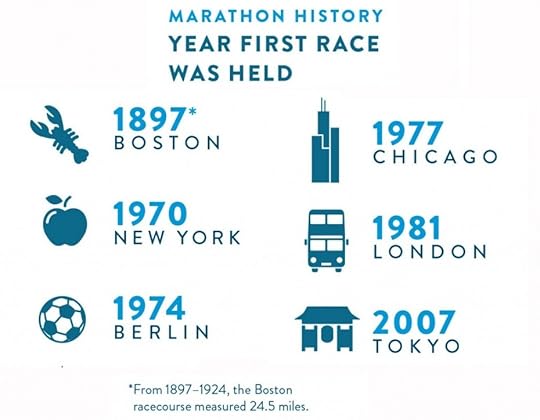
View Larger Image

View Larger Image

View Larger Image
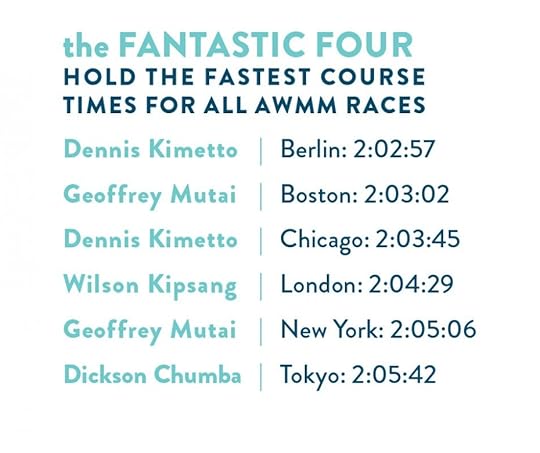
View Larger Image

View Larger Image


More Galleries
The post 6 Fun Facts About the World Marathon Majors appeared first on Competitor.com.
Gear We Love: October 2015
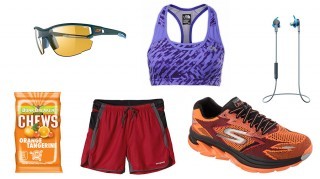
Shorts, shoes, sunglasses, socks, and shirts—we’ve got almost everything covered in this month’s editors’ picks. Here’s what we’re loving in October.
RELATED: Gear We Love: September 2015
Photo Gallery
1 of {count}
Back to Start
Competitor.com.
Out There: Love and Racing

Photo: Shutterstock.com
Reader question: I’ve been dating a new guy for a couple of months. Things are going really well! Though he isn’t a runner like me, he’s very supportive of my training. I’m doing my first half marathon next weekend. It’s a big deal for me, and all my friends and family, most of whom he hasn’t met yet, will be there. Should I invite him, too? I really want him there but I also worry about having him meet everyone this way.
Absolutely! And hell, no! There’s no easy answer to that question. On one hand, having your new romance on the sidelines can be incredibly motivating. On the other, it can be a distraction during your first race.
When I did my first Ironman, my new boyfriend, Neil, offered to come along to cheer me on. I was excited to have him there—he had been through the race before and knew what to expect, so his insight was valuable. It wasn’t until race morning that I realized that I would be introducing my new boyfriend to my mom and sister (who were also spectating), then leaving them alone for hours.
Would they like each other? Would my very conservative boyfriend get along with my mom, who is every cliché of a bleeding-heart liberal? Would my sister tell him all the embarrassing stories she swore she’d never tell? Would Mom wield her cell phone to say, “Neil, you’ve got to see this home video of Susan throwing a temper tantrum”? I had spent the last six weeks of dating trying to convince Neil I was relatively normal…ish. A few hours alone with my family members, who (and I say this with love) are batshit crazy, could crumble the façade of normalcy I had tried so hard to create.
RELATED: 10 Awful Pick-Up Lines Runners Can Use
Before I could jump out of the athlete corral and run interference, the starting gun went off. I would have many miles to think—and by “think,” I mean “experience mild panic”—about what was happening on the sidelines.
In that moment, I almost—almost—wished Neil hadn’t come to that race. It was added stress on a day when I had more than enough to think about.
But you know what? It all turned out fine. Great, even. Yes, Neil said some things that caused my mom to raise an eyebrow. My sister passed the time with stories that started with “So this one time in college, Susan got drunk and…” My mom didn’t pull up my temper-tantrum video, but there was a matinee showing of 4-year-old Susan singing “Baby, Take A Bow.” But as the race went on, I was too distracted (tired?) to really care anyore.
I tell this story not to scare you, but to present a worst-case scenario with a happy ending. When I look back on that race, I don’t really remember the panic and the worry. I remember seeing the people I love lift my spirits every time I passed them on the course. I remember my mom telling me she loved having Neil there to explain everything that was going on during the race. I remember Neil picking me up for a big, sweaty hug at the finish line.
Four years later, we married. My batshit crazy family proudly boasts of their “normal” in-law.
If you like this guy and you really want him at your race, invite him. Let him know you’ll have a cheering section and that you’d love for him to be a part of it. Take comfort in knowing that whatever you’re worried about in this meet-the-family scenario likely isn’t as bad as you think it’s going to be.
And if it is…well, you’ll be too busy racing to notice.
****
About The Author:
Susan Lacke does 5Ks, Ironman Triathlons and everything in between to justify her love for cupcakes (yes, she eats that many). Susan lives and trains in Salt Lake City, Utah with three animals: A labrador, a cattle dog, and a freakishly tall triathlete husband. She claims to be of sound mind, though this has yet to be substantiated by a medical expert. Follow her on Twitter: @SusanLacke.
The post Out There: Love and Racing appeared first on Competitor.com.
October 21, 2015
Workout of the Week: Alan Culpepper’s Track Tempo Run

Alan Culpepper is one of the most consistent marathoners the U.S. has ever seen. He finished fourth at the 2005 Boston Marathon (above), won the 2004 U.S. Olympic Trials and finished 12th at the Games in Athens. His personal best is 2:09:41. Photo: PhotoRun.net
Three years ago I had the honor of being coached by my colleague Alan Culpepper as I prepared for the Los Angeles Marathon. At the time, it was my third 26.2-miler and first time training to race the distance in almost four years.
As you might expect, there’s a lot to be learned from a two-time Olympian, but perhaps the most important lesson training under Alan reaffirmed for me was that there are no secrets or magic workouts. A successful training block is all about consistency and progress over the course of many weeks of preparation.
One of my bread-and-butter benchmark workouts during the L.A. buildup was a 6-mile tempo run on the track—yes, lap after lap around a 400-meter oval—that I did about once every two weeks. While most of my faster workouts were assigned a specific pace or a target effort level, this was the only one where he had me monitor my heart rate. Alan called this session an AT (short for anaerobic threshold) Tempo, and the goal was to keep my heart rate at roughly 80-85 percent of my max, which for me translates to 170 bpm.
In fact, Alan wrote in my online training log: “6-mile AT on the track: The goal is to run 1/2 marathon race effort and run as even as possible. Keep your HR around 170 and let the pace be what it may.”
By keeping the workout environment consistent and focusing on heart rate, Alan explained, it was easy to track progress. And, sure enough, as I became fitter, I was able to run faster at the same average heart rate. By the end of my 12-week training cycle, I ran 6 miles at 170 average heart rate 12 seconds per mile faster (5:37/mi) than when we first started out (5:49/mi). And, most importantly, I ran an evenly split 2:36:31 at L.A., right at my goal pace of 6:00/mi.
Here’s how to do Alan Culpepper’s Track Tempo Run:
— Warm up with 2-3 miles of easy running, drills and strides.
— Run 3-6 miles (12-24 laps of an outdoor track) at 80-85 percent of your max heart rate (or roughly half-marathon race pace)
— Cool down with 2-3 miles of easy jogging.
RELATED: Coach Culpepper: Know Your Tempo
The post Workout of the Week: Alan Culpepper’s Track Tempo Run appeared first on Competitor.com.
Michael J. Fox Receives Back to the Future’s Self-Lacing Nikes
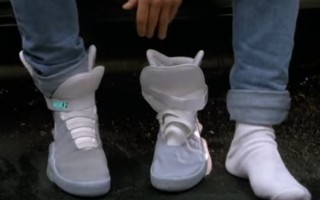
At least one of the predictions from the 1989 film Back to the Future Part II, in which Marty McFly and Doc travel to the future of well…today, has come true. Nike’s self-lacing sneakers became a 2015 reality and present day Marty has Twitter proof they’re here.
Last night Nike posted this tip-off tweet to Michael J. Fox of an ambiguous arrival of sorts, sending social media 80s pop-culture fans into a frenzy.
.@realmikefox see you tomorrow.
— Nike (@Nike) October 21, 2015
It was safe to assume that Nike would be releasing the actual self-lacing sneakers as showcased in the movie in perfect timing of “Back to the Future Day.” And this afternoon Michael J. Fox confirmed the rumors with this video tweet, demonstrating the power-lacing technology imagined 26 years ago:
Michael J. Fox models the first self-lacing @Nike Mag pic.twitter.com/bgPWM5CKBE — michaeljfox.org (@MichaelJFoxOrg) October 21, 2015
“As the first, most celebrated wearer of the Nike Air Mag we wanted you to be the first to receive a living pair.” says Tinker Hatfield, the Nike designer who designed the movie’s original shoe, in a letter to Fox that arrived with the present-day pair.
In addition to Fox’s personal pair, Hatfield noted in the letter that Nike will be releasing more models of the Nike Air Mag in the spring of 2016 to raise funds for the Michael J. Fox Foundation. According to Wired magazine, the Nike Air Mag’s first release was in 2011, in which 1,510 pairs (without the power laces) helped raise $9.4 million for the foundation.
Now they’re back with 2015 power-lace technology and we’re thinking, when will Nike create power-laces for runners?
RELATED: Remember When Back to the Future Part III Made Fun of Running?
The post Michael J. Fox Receives Back to the Future’s Self-Lacing Nikes appeared first on Competitor.com.
Trail of the Week: Apex Park, Golden, Colorado

Our Trail of the Week feature is made possible through a partnership with Trail Run Project.
Located just outside of Golden, Colorado—which is just outside of Denver, Apex Park is a 700-acre foothills experience with plenty of great trails for runners to explore.
This loop totals 5.4 miles but climbs more than 1,100 feet and allows for views of Denver and the mountains surrounding it.
The Front Range of Colorado is known for great running trails and this is one of the best. It’s a perfect choice for a fall run and should be in great condition for the next few weeks.
The Data
Miles: 5.4
Runnable: 82 percent
Average Grade: 9 percent
Max Grade: 55 percent
Total Ascent: 1,205 feet
Total Descent: -1,199 feet
Highest Elevation: 7,201 feet
For a closer look, check out the interactive map, data, photos and virtual run simulator courtesy of Trail Run Project:
The post Trail of the Week: Apex Park, Golden, Colorado appeared first on Competitor.com.
Video: NPR Checks Out the Man vs. Horse Marathon in Wales
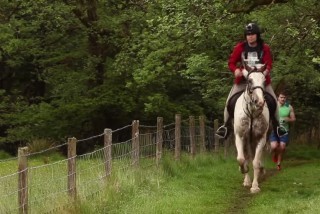
NPR had a cool story about humans and their pathetic running speed versus other animals—except for long-distance races like the marathon.
To see long-distance running between two species put to the test, NPR’s Skunk Bear went to Wales to watch the Man vs. Horse Marathon—a 22-mile off-road race where humans take on horses (who start 15 minutes later to avoid start-line trampling). Past results have been mixed—humans have won some, horses have won some—so it’s always a dramatic day of running.
It’s a funny look at a quirky race—and the quirky attributes that separate humans from other animals.
RELATED: 10 Quirky Events for the Unusual Running Experience
The post Video: NPR Checks Out the Man vs. Horse Marathon in Wales appeared first on Competitor.com.
Ryan Hall's Blog
- Ryan Hall's profile
- 21 followers



